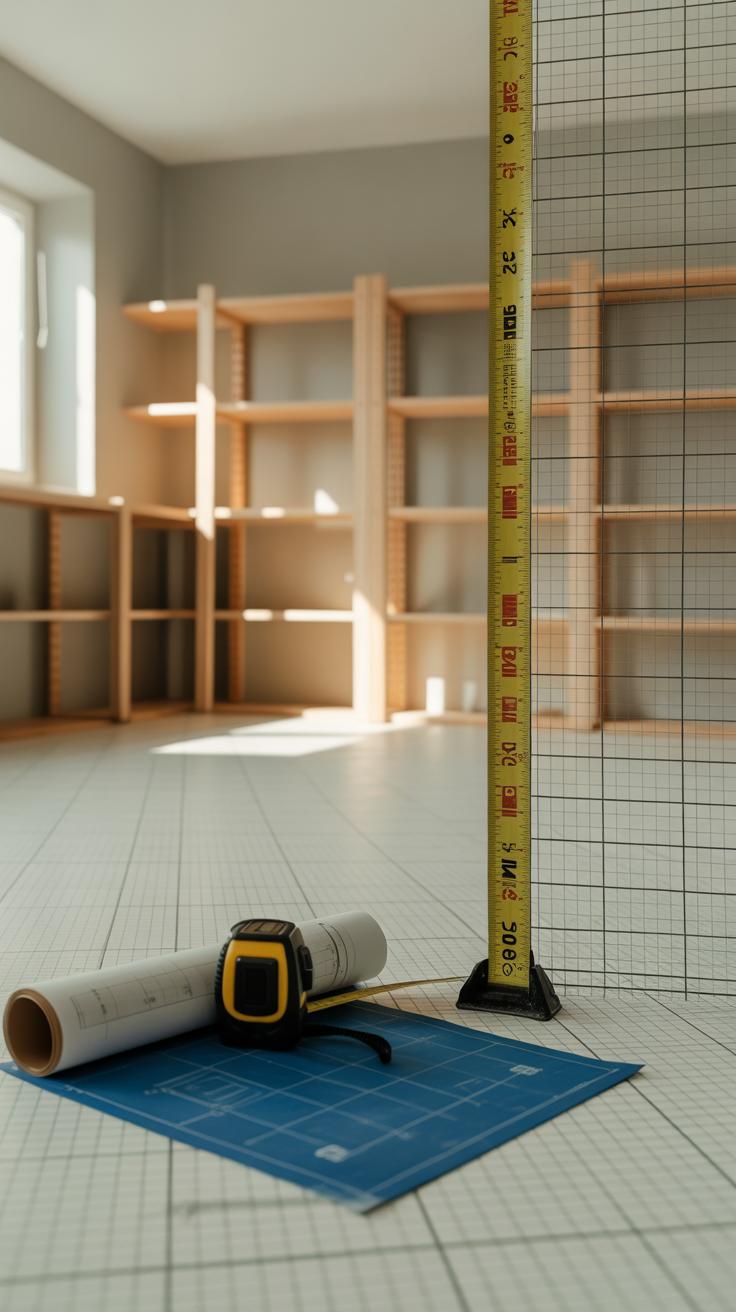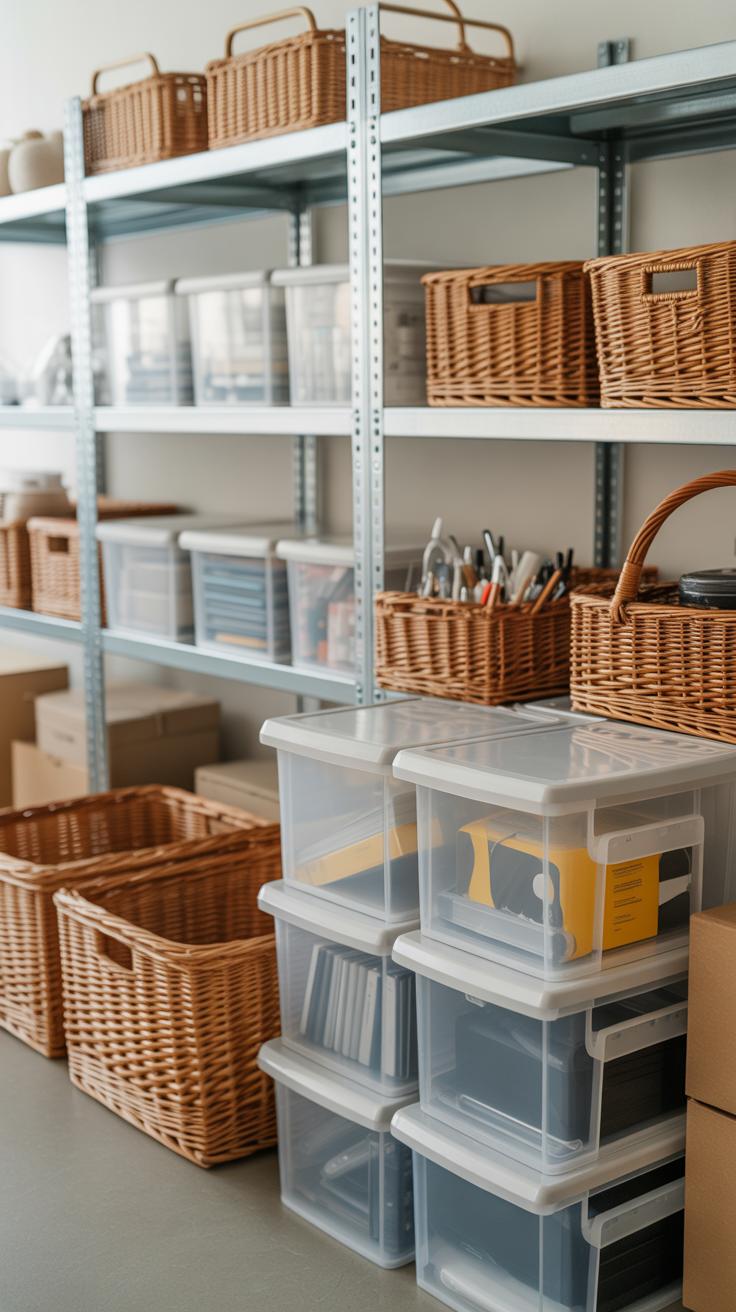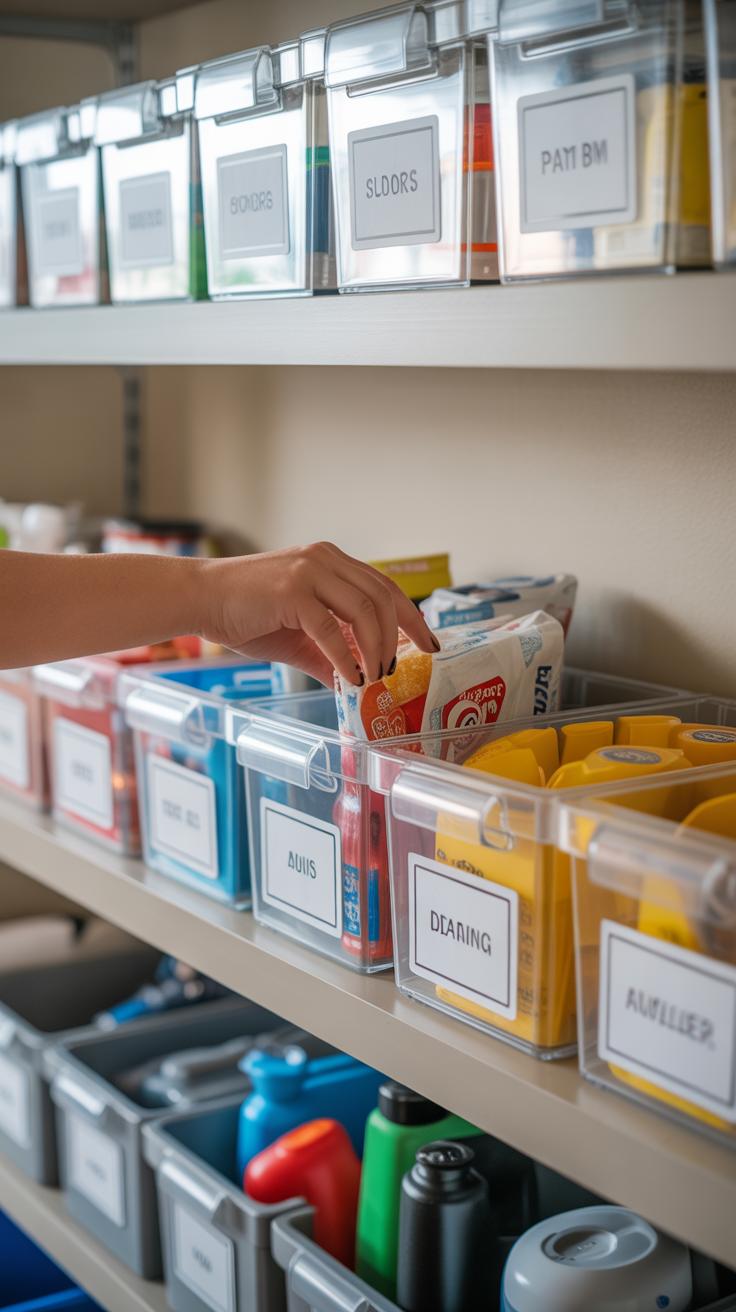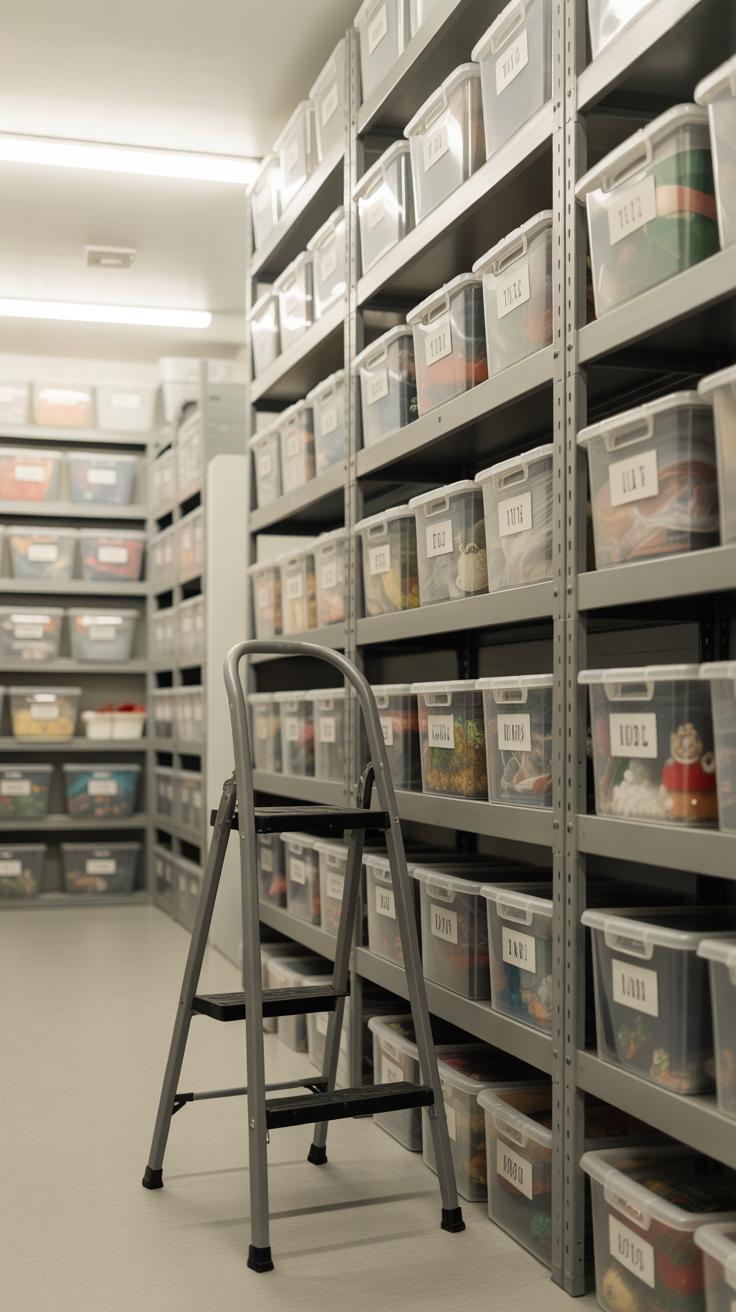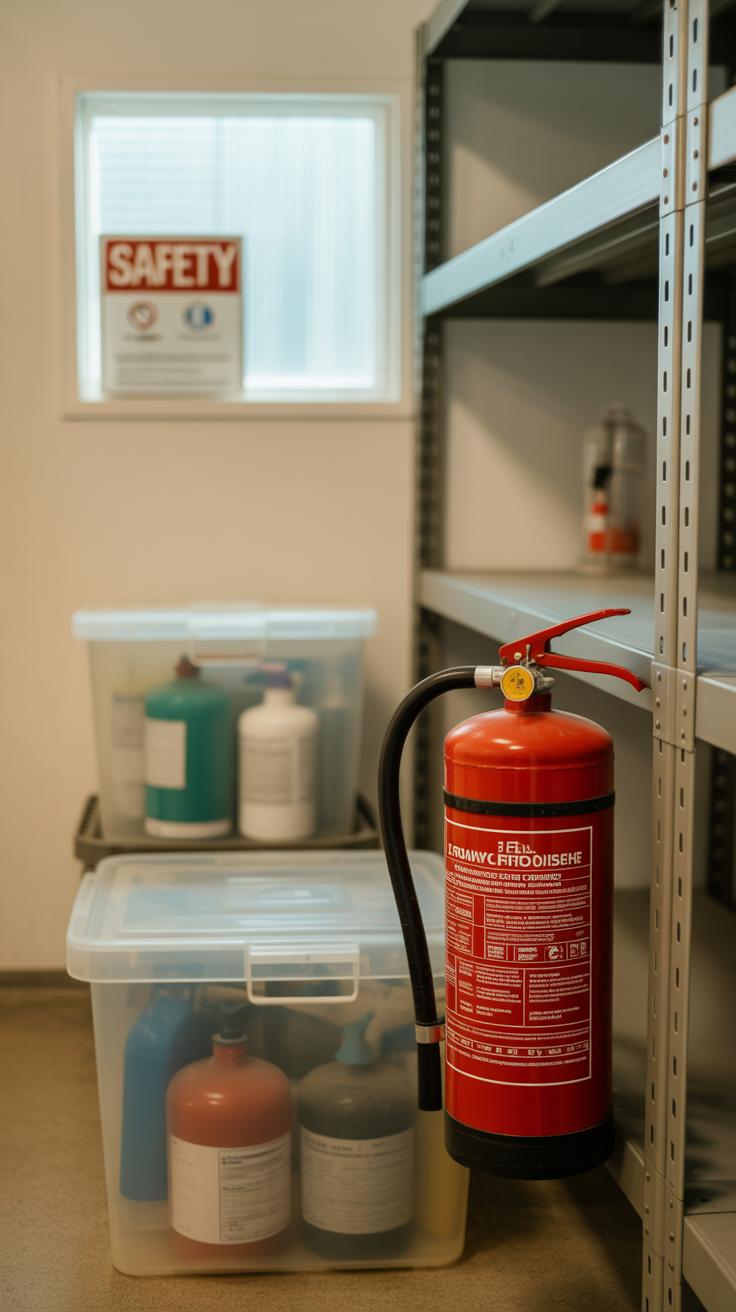Introduction
Keeping your storage room clean and organized makes your home more functional. This guide will walk you through simple and clear steps to transform your storage space. You will learn how to sort, store, and maintain your items effectively.
Whether your storage room is small or large, this guide fits any home. Discover tips to make the most of your space, reduce clutter, and find things easily. By the end, you will be ready to organize your storage room in a way that works for you.
Understanding Your Storage Space
Before jumping into organizing, take a moment to really understand your storage space. It might sound obvious, but many people overlook how different storage areas demand different approaches. The room’s type and features shape what you can do — and what won’t work.
Types of Storage Rooms
In most homes, you’ll find a few common storage spots, each with its quirks:
- Closets: Small and enclosed, ideal for seasonal clothes, cleaning supplies, or small boxes. Their limited space means vertical use often matters.
- Basements: Often damp or cold but spacious. Good for bulky or rarely used items. You’ll want moisture protection and sturdy shelving here.
- Garages: Usually spacious with concrete floors and wide access, good for tools, sports gear, and garden supplies. But dust and temperature swings can be challenging.
- Attics: Harder to access with sloped ceilings. Best for lightweight, non-perishable items since temperature can vary widely.
Different environments demand different storage solutions. For example, plastic bins might work well in a basement but could trap moisture in a less ventilated closet. You might underestimate how much door clearance or lighting affects usability—small details but noticeable once you start rearranging.
Assessing Your Space
Take time to measure every inch—length, width, height. Try to picture how you’ll reach into corners or shelve tall boxes. Are access points wide and easy, or narrow and awkward? Close doors or move around furniture to see what’s practical.
Note lighting. A dark basement without windows means you’ll want portable lamps or LED strips. On the other hand, a well-lit garage might let you skip complicated solutions.
Ventilation matters too. Spaces that don’t breathe well can cause mustiness or damage over time. If your storage room feels stuffy, plan for airflow or moisture control.
Look at any shelves, hooks, or built-in storage already there. Sometimes you find good bones to build on, sometimes you’d rather clear it all out.
Knowing your space well helps avoid overloading it with stuff you can’t access or maintaining clutter because you don’t know what fits. It’s a small extra step but saves a lot of frustration later.
Sorting and Decluttering Items
Sorting through a storage room can feel overwhelming, but breaking it down into clear steps helps. Start by grouping your items into categories that make sense to you—tools, holiday decorations, sports gear, things you use daily, stuff only a few times a year. This way, you’re not just creating piles; you’re setting up a system that reflects how you live and what you really need.
Try to think about how often you reach for something. For example, if you hardly ever touch the camping gear, it can go to a less accessible shelf. On the flip side, frequently used items like cleaning supplies should be easier to grab. Sorting by function and frequency helps not just with storing, but also with finding things later.
Deciding what to keep or let go is where it gets tricky. Ask yourself: When did I last use this? Is it still in good shape? Does it really serve a purpose? It’s tempting to hold onto things “just in case,” but keep only what fits your current needs or plans. Items that no longer work or suit you can be donated or recycled. This clears space and gives new life to objects someone else might need.
Be kind but honest with yourself during this. Sometimes, I find myself hesitating over certain items—maybe because of memories or guilt—but thinking about who else could benefit makes it easier to let go. Even if you’re unsure, setting aside a box for donation helps you move forward.
Choosing Storage Solutions
Picking the right storage tools makes a big difference in keeping your room orderly. You’ll find that shelves, bins, hooks, and labels each serve distinct purposes, depending on what you need to store. For example, hooks are great for hanging bulky items like garden tools or bags, freeing up floor space that might otherwise get cluttered.
Shelves come in many forms—metal, wood, plastic—and each suits different conditions. Wire shelves are decent for ventilation but might not hold small items well. Solid shelves prevent smaller things from falling through, but they can feel bulky in tight spaces. Think about your room’s layout and the kinds of items you have before settling on one type.
Storage containers vary too, from clear plastic bins to fabric boxes. Clear bins help you spot contents without opening them, but fabric ones are lighter and stack easier. If you store variously sized items, mixing container types might be the way to go. Too often, people stick to one type and regret the lack of flexibility later.
Labels might seem trivial, yet they make or break long-term order. When bins and shelves are labeled clearly, you save time hunting for things—trust me, it’s worth investing a little effort here. You could use printed labels, handwritten tags, or even picture stickers for visual cues. The key is consistency, so you recognize labels at a glance, even in a rushed moment.
What’s your threshold for “organized enough”? Sometimes over-planning storage solutions leads to unused space or confusion. Don’t overthink—choose tools that fit your lifestyle and the things you actually use, not just what looks neat. After all, a system is only as good as you can maintain it.
Organizing for Accessibility
When arranging your storage room, think about how often you actually use each item. It might seem obvious, but placing frequently used things where they’re easiest to grab can make a big difference. Items you reach for every week—like cleaning supplies or seasonal gear—shouldn’t be buried in the back or stashed too high.
Try to keep those everyday essentials front and center, or at least around eye level. That way, you don’t waste time digging or stretching. For example, I once had my toolkit tucked away on a top shelf and ended up avoiding small repairs just because I didn’t want to climb every time.
Creating zones also helps keep your space practical. Group similar things together or cluster items based on how often you need them. Maybe one corner holds holiday decorations, rarely touched except once a year, while another spot near the door contains sports equipment or shoes used almost daily. This kind of arrangement nudges you to stay organized naturally.
- Place daily-use items at eye level or within easy reach
- Reserve lower or higher shelves for stuff used less often
- Divide your room into sections based on item type or how frequently they’re needed
- Label zones clearly so you know exactly where to look
- Try adjusting zones over time if your habits change
Have you thought about what truly counts as “frequent use” in your home? Sometimes we assume certain things get used often when, in reality, they sit untouched for months. Organizing for accessibility means being honest with yourself about what you really need close by—and maybe what can wait comfortably on a top shelf.
Maximizing Vertical Space
Using the vertical height of your storage room can really change the game. Think about the walls and ceiling not just as boundaries but as potential storage areas. Hooks on walls are great for hanging tools or garden gear—you can keep these items off the floor and easy to spot without cluttering your main shelves. Bikes, ladders, or even folding chairs find a good home on sturdy wall hooks or ceiling-mounted racks. It might feel a bit awkward at first to reach items above your head, but placing things you use less often up high makes sense.
Installing Tall Shelves
Tall shelves open up vertical space, but they need to be installed carefully. Secure them firmly to studs in the wall to prevent tipping, especially if you plan to store heavy boxes up there. Tall shelving works best for seasonal or rarely used items—holiday décor, spare bedding, or bulk supplies. When I set up mine, I made sure to keep a small step stool nearby, because those upper shelves are not for daily access. Safety and practicality matter here; you want the shelves to be stable and the stored items to be manageable.
Using Ceiling and Wall Space
Mounting racks or hooks on the ceiling lets you free up floor space—perfect for bicycles or bulky tools. Overhead racks can store bins labeled by season or purpose, making better use of what usually goes unused. Walls can take a lot of weight if you use the right anchors and positioning. Pegboards or heavy-duty hooks can keep your tools visible and ready without hunching over drawers. It’s a bit of an investment in effort upfront but pays off when navigating your storage room feels less like a maze.
Maintaining Your Organized Storage
Once you’ve arranged your storage room with care, the next challenge is keeping it that way. It’s easy to let clutter sneak back in or forget what’s stored where. Setting a cleaning schedule can help stop that from happening. Maybe once a month, or every few weeks if you use the space often, take some time to dust shelves, sweep the floor, and wipe down containers. It doesn’t need to be a big chore—just enough to prevent dirt buildup and to keep things looking tidy.
Another thing you might want to try is reviewing and rotating your stored items regularly. Forgotten stuff tends to accumulate, right? Pick a time that makes sense seasonally—maybe spring and autumn. During these reviews, switch out seasonal goods, like holiday decorations or winter gear, so they’re easy to reach when needed. And don’t hesitate to remove anything you no longer use; it’s surprising how much remains stored just because we forget it’s there.
Have you noticed how a quick tidy-up can actually feel refreshing? That little bit of effort pays off, creating a space that stays functional and less overwhelming over time.
Safety and Protection in Storage
Safe Stacking and Storage
Stacking items safely isn’t just about making your storage room look tidy—it really helps keep you and your belongings safe. Start by putting heavier and sturdier boxes at the bottom. If you place lighter, fragile boxes on top, they’re less likely to get crushed or cause a tumble.
Try to keep stacks no higher than you can comfortably reach without a ladder or stool—though sometimes, I admit, I’ve pushed a little beyond that line. Still, leaning or unstable piles increase the chance of accidents. Using shelves or sturdy cabinets can help support boxes and reduce risks. When stacking, think about weight distribution—does that bottom box feel solid enough?
Leave enough space between stacks for easy access and airflow. Cramping everything too close might seem like a space saver but can lead to chaos and hazards if things topple or you need to move stuff quickly.
Protecting Items from Damage
Storage safety isn’t just about preventing falls. Think about what could damage your stuff over time—moisture, pests, and temperature fluctuations. Moisture can sneak in, even if you don’t see it right away. Using moisture absorbers or silica gel packets in boxes helps keep things dry, which is especially useful for paper items or fabrics.
Pests are tricky. Sometimes you think your storage is secure, but a single crack or even a forgotten food crumb invites unwanted guests. Sealing boxes tightly and checking the room regularly makes a big difference. Maybe add some natural deterrents like cedar blocks or sachets; they’re not foolproof but better than nothing.
Temperature matters, too. Basements can get cold and damp; attics can bake in summer. Both extremes may warp or weaken delicate items like photos or wooden furniture. If your storage space tends toward these extremes, consider using climate control methods like fans or dehumidifiers—or just think twice before stashing certain valuables there.
In the end, protecting your stored items is a balance between careful planning and ongoing attention. You might be surprised how small changes in stacking or environment control can save you from frustrating damage down the road.
Customizing Your Storage Room
When organizing your storage room, one size rarely fits all. Your belongings, habits, and the space you have shape what works best. Maybe you store a lot of seasonal gear but only bring it out a few times a year. Or perhaps you use your storage daily for tools or craft supplies. These differences matter.
Start by figuring out what you use most. Shelves near eye level for everyday items, bins for small things, and hooks or racks for awkward shapes can make a big difference. Don’t be afraid to mix styles—plastic bins with wire baskets, or open shelving beside closed cabinets. Personal preferences also count. For example, if you prefer to see everything, clear containers might suit you better than opaque ones.
Keep in mind that your system shouldn’t stay fixed forever. Life changes, new purchases, even seasonal shifts can mean your setup needs tweaking. A quick check every few months or whenever you notice clutter creeping back can save you a lot of frustration later. What worked last year might not make sense today. Sometimes, moving a shelf or swapping bins is enough to restore order.
Conclusions
An organized storage room saves time and stress. When you know where everything goes, you spend less time searching and more time enjoying your home. Keep sorting and adjusting your system to fit your needs.
Your storage room can be a helpful space instead of a problem area. With the ideas in this guide, you can create a neat, practical room to hold your items. Start today and see the difference it makes in your daily life.


